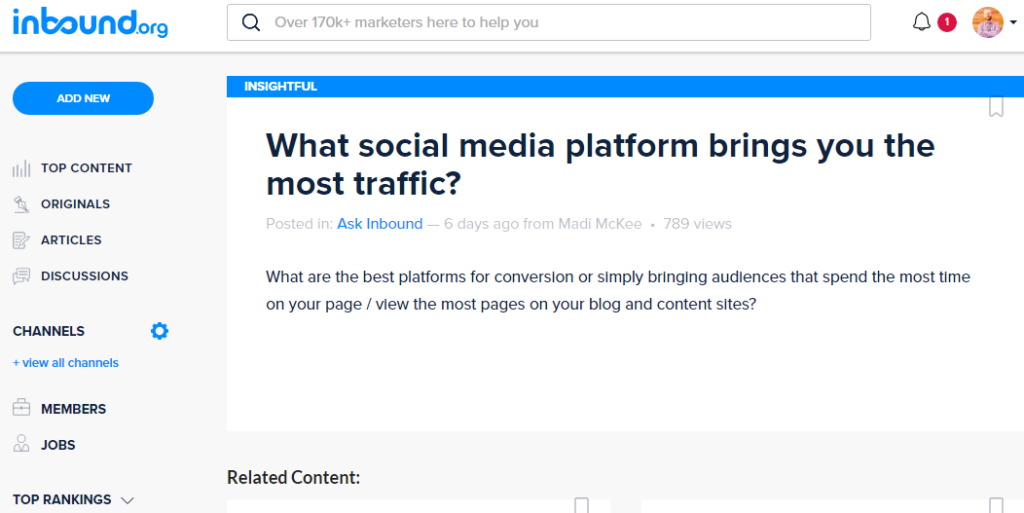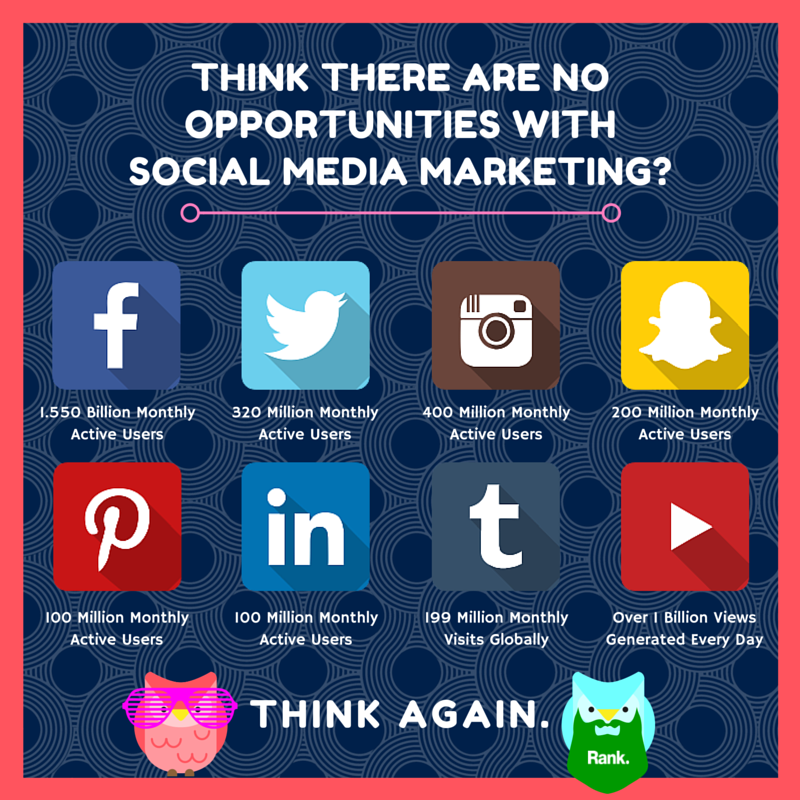Five Reasons Why Content Marketing Is Surging
By: Rank Media

There are many reasons why content marketing has become such a force over the past several years. One of the main reasons marketing professionals all over the world are investing resources into creating content is the advancement made in technology over the past ten years. It has become easier than ever to disseminate information across multiple platforms, ranging from social media platforms & mobile apps to websites, blogs, and newsletters.
Another benefit of content marketing is the prominence of experts within specific niches and verticals. Before the rise of the internet and the proliferation of blogs and content-rich websites, it was nearly impossible for the average writer to make his/her thoughts known to the world, let alone world-class experts. For example, look at Rand Fishkin from Moz, a popular SEO & digital marketing platform for businesses and agencies alike. Rand established himself as an authority in the world of search engine marketing by publishing content, videos, and ebooks, something that could not have been done in the 90s. Rand Fishkin is only one of millions of experts disseminating content on a daily or weekly basis, cultivating massive followings by sharing their expertise, thoughts, and opinions.
Why has content marketing become such a powerful activity in inbound marketing strategies? Below are the five main reasons.
Number 1: No Technological Barriers
As alluded to in the first two paragraphs, the rise of content marketing can be directly attributed to the lack of technological barriers. It is now easier than ever to setup a blog, write content and click “publish.” The availability of powerful content management systems (CMS) and website builders gives content publishers easy access to secure their own space on the internet and contribute content on a regular basis. This has also led to a revolution in the news industry. Before the rise of the internet, people relied on television and newspapers for information on current events. These days, however, people rely on blogs, social media channels, and emails to receive instant notifications on current events, which has given major content publishers an opportunity to profit from monetizing traffic (such as Buzzfeed, which has gained notoriety from surveys and meme-filled articles)
Number 2: Rise of Industry Experts

Due to information being widely available, it has become easier for the average Joe & Jane to consume as much information as possible, either through free resources (*cough* Wikipedia *cough*) or online retailers (for example, I have a collection of books on digital marketing acquired via Amazon.ca). Thus, many people have become experts in their field by reading as much information as possible and applying theoretical learnings to their work. For example, Marcus Sheridan quickly established himself as an authority in his niche (fiberglass pools) by publishing content conveying his expertise in the subject. On the flip side, over the past few years, copywriters and journalists have been in high demand due to the need for superior quality content for websites, and the ability to publish a consistent volume of content on a regular basis.
Number 3: Demand for Content
Naturally, the demand for content of all types has increased over the past ten years as internet users have become savvier. This is easily seen in the digital realm where many programmers, web designers, and digital marketers have perfected their craft by seeking out tutorials, resources, and case studies. With regards to all content marketing, several stats reinforce the notion that custom content is in high demand:
- Internet users spend over half their time online seeking information and reading content. (Nielsen)
- 51% of business-to-business marketers have placed importance on creating visual content assets in 2016. (CMI)
- 61% of users have stated that they have a more positive attitude about a company that publishes custom content and will be more likely to purchase from that brand. (Content Council).
People once relied on physical newsletters to consume information. In this digital era, people now turn to the internet for their daily dose of information. Reading content online has become the norm, and has given businesses and individual experts the opportunity to capture online traffic and convert them into customers.
Number 4: Growth of Social Media

Coinciding with the proliferation of mobile ubiquity, social media platforms have seen increased engagement rates and a surge in monthly active users over the past couple of years. Initially, it seemed like social media was just a “fad” as per some experts back in 2010. However, the popularity of Facebook, Instagram, and Snapchat shows that social media is here to stay, and marketing professionals need to understand how to best leverage each platform.
The rise of social media has made it easier for online users for subscribe notifications of new posts and scroll through timelines to catch up on the news. Sharing content on Facebook, Twitter, LinkedIn, and Pinterest has also become a standard routine for major publishers, utilizing these channels to push more traffic back to the initial content source. Disseminating news and publishing information has also evolved over the years as both videos and live streaming have become more popular and show no signs of slowing down (Facebook, YouTube, Instagram, Snapchat, and Twitter have all pushed live and video content to the forefront recently).
Number 5: Use of Search Engines
Seeking out content is easier than ever with the use of search engines. Once content is published and indexed on search engines such as Google and Bing (don’t forget Duck Duck Go, which is quickly becoming more popular every month), it becomes easier to find based on the keywords within the article and the search terms used to find the content.
The ever-changing algorithms managed by these search engines make it easier to match long-tail search queries to content that either answers questions or provides highly pertinent information. Google has made it easier for users to find answers to questions by displaying as much information on search engine listings in the form of structured snippets, content boxes, and the knowledge graph.
To maximize the presence of your content, you need to tailor your content around popular searches, specific long-tail queries, and other keywords that can help you capture more relevant traffic.
The future of content marketing

It’s likely that content marketing will continue to be an essential element of inbound marketing as more people take their attention away from traditional sources (TV, radio, print) and go online to find information. Content in all forms is moving to a digital format – just look at the rise of companies such as Netflix, the digital powerhouse is distributing new television shows and films on a regular basis. Even though it may seem cumbersome to write new content on a consistent basis, this form of digital marketing can yield the best potential return, especially if you create evergreen content, which is not time-sensitive and will remain relevant for years to come.







 (800) 915 7990
(800) 915 7990
